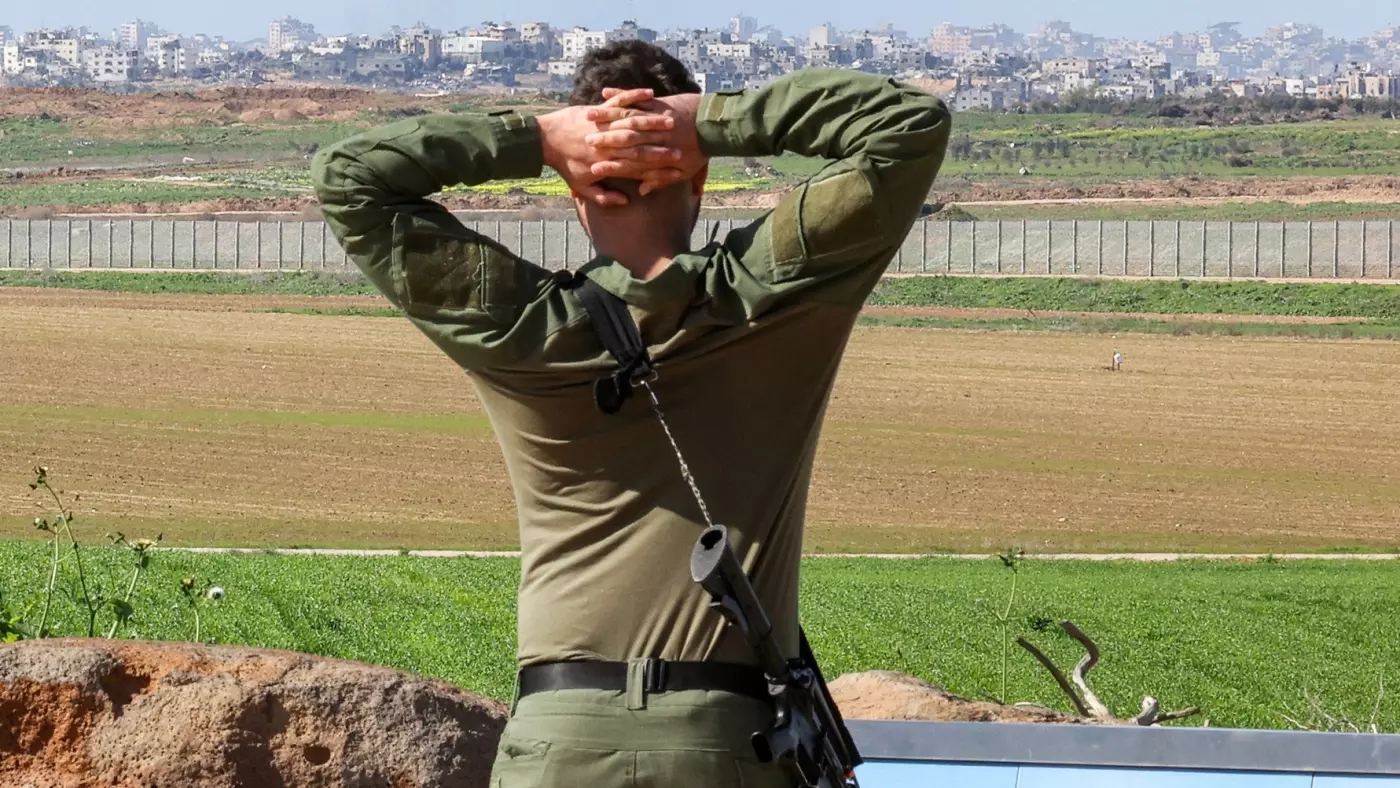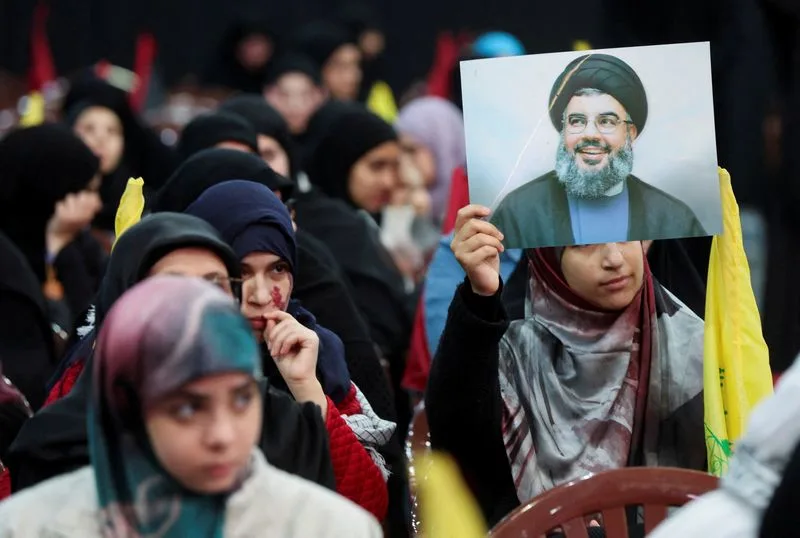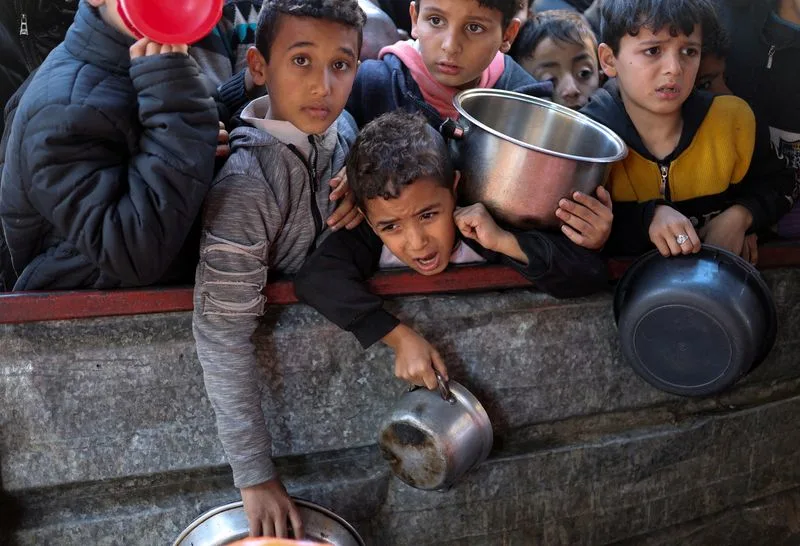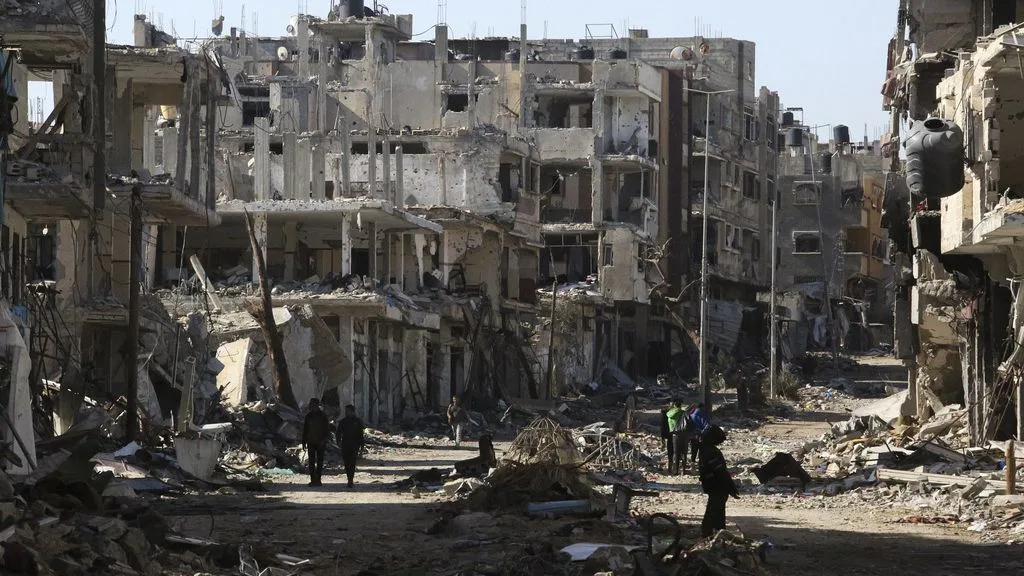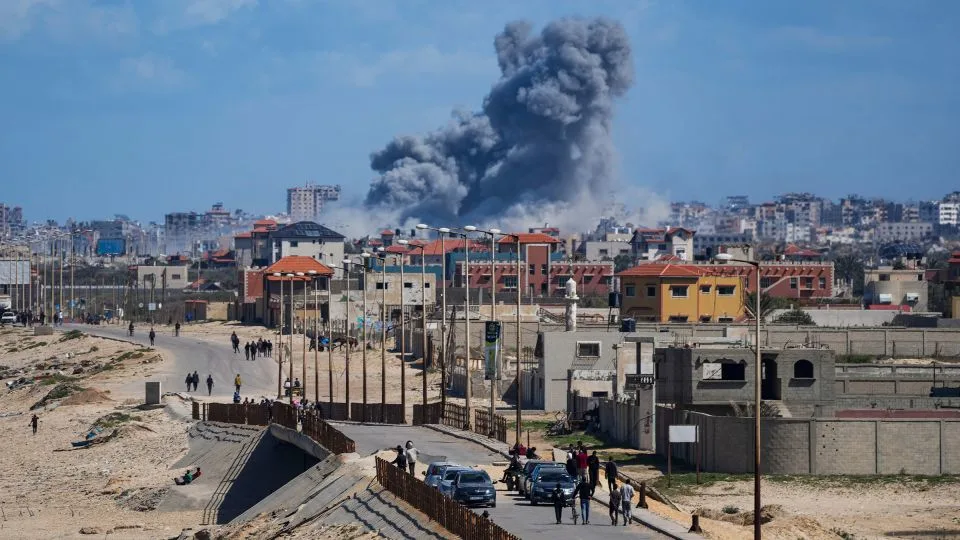The United Nations will assess on Thursday how it can use an Israeli military road bordering the Gaza Strip to deliver aid to hundreds of thousands of desperate civilians in the north of the Palestinian enclave, a senior U.N. aid official said.
The U.N. has warned that at least 576,000 people in Gaza – one-quarter of the population – are on the brink of famine.
Jamie McGoldrick, U.N. aid coordinator for the Occupied Palestinian Territory, said the U.N. had been pushing Israel for weeks to use the Gaza border fence road and had received much more cooperation from Israel in the past week.
Palestinian officials say more than 100 people were killed last Thursday trying to reach an aid convoy near Gaza City, most of them shot by Israeli troops. Israel’s military, which had been overseeing the private aid deliveries, said most of them died in a stampede.
“Since the incident last week, I think Israel saw quite clearly how difficult it is to deliver assistance,” McGoldrick told reporters, adding that the U.N. had seen “much more cooperation from Israel as a result of that realization.”
Aid can currently reach Gaza in the south via the Rafah crossing from Egypt and Kerem Shalom from Israel. McGoldrick said the plan was for aid convoys to be inspected at those crossings, then escorted through Israeli territory along a military road to the Israeli border village Beeri.
“Once we go inside Gaza, we will be then left to go on our own,” he said, adding that the U.N. would do an assessment of the possible new route on Thursday to check the state of the roads within Gaza to ensure there is no unexploded ordnance and to identify suitable distribution points for the aid.
ROAD VS AIR
McGoldrick said that using this route to reach northern Gaza allowed aid convoys to avoid congested roads and insecurity within the enclave. The U.N. World Food Programme (WFP) paused its deliveries to northern Gaza on Feb. 20 due to safety concerns with its convoys exposed to attacks by hungry mobs.
McGoldrick said other avenues for aid – including Israel’s Ashdod port and air drops by the United States and Jordan – were “helpful but these are not going to address the significant needs, which can only be done by road transport.”
The U.N. Palestinian refugee agency UNRWA has said that during February an average of nearly 97 trucks were able to enter Gaza each day, compared with about 150 trucks a day in January – well below a target of 500 trucks a day.
Israeli government spokesperson Eylon Levy on Wednesday that there are no limits on the amount of aid that can enter Gaza, urging donors: “Send the aid, we’ll get it in.”
“Israel’s crossings are able to scan 44 trucks an hour combined,” Levy told reporters. “The problem is distribution. The U.N. is struggling to distribute aid at the pace that Israel is letting it in.”
He said Israel was “working on new strategies together with the private sector inside the Gaza Strip to get aid to the people who need” and that on Wednesday more than a dozen food trucks traveled to northern Gaza in coordination with Israel.
The war in Gaza began when Hamas fighters attacked Israel on Oct. 7, killing around 1,200 people and seizing 253 hostages, according to Israeli tallies. Israel retaliated by initially imposing a “total siege” on Gaza and launching an air and ground assault has since killed around 30,000 Palestinians, health authorities in the Hamas-run enclave say.
International focus should be on large-scale distribution and entry of humanitarian aid into Gaza by land, but any way to deliver more aid is “obviously good,” the United Nations said on Thursday after the U.S. announced plans to build a sea port.
“Any way to get more aid into Gaza, whether by sea or airdrop, is obviously good,” said U.N. spokesperson Stephane Dujarric when asked about the plan for a temporary port on Gaza’s Mediterranean coast to receive humanitarian assistance.
Delivery of aid by land, however, is more cost- and volume-effective, Dujarric said, and “we need more entry points and we need a larger volume of aid to come in by land.”
The U.N. has warned that at least 576,000 people in Gaza – one-quarter of the population – are on the brink of famine.
Some aid can enter Hamas-run Gaza via the Rafah crossing from Egypt and Kerem Shalom from Israel. Before the conflict, Gaza relied on 500 trucks with supplies entering daily.
The U.N. Palestinian refugee agency UNRWA said last week that an average of nearly 97 trucks were able to enter Gaza each day during February, down from about 150 a day in January. Deliveries through Kerem Shalom were blocked at times by Israeli protesters, UNRWA says.
The U.S., Jordan and France have also conducted air drops and Israel has overseen aid deliveries by private contractors.
The U.N. said a new land route to northern Gaza would be assessed on Thursday. The World Food Programme (WFP) paused its deliveries to northern Gaza on Feb. 20 due to safety concerns with its convoys exposed to attacks by crowds of hungry people.
U.S. officials have said distributing aid in Gaza has been a significant challenge because lawlessness has escalated, with criminal gangs seizing aid and reselling it.
The U.N. Office for the Coordination of Humanitarian Affairs (OCHA) said on Thursday that Israel had facilitated half the 224 planned aid missions in February to areas throughout Gaza that required coordination.
“Following Israeli naval fire that hit a U.N.-coordinated food convoy heading to north Gaza on Feb. 5, there was an operational pause and, as a result, only 24 missions were planned to the besieged north last month,” OCHA said.
“Of them, just six were facilitated,” it said, adding that of the 200 planned missions to areas in southern Gaza, 105 were facilitated by Israel.
Israel has said it is committed to improving the humanitarian situation in Gaza and there is no limit on the aid for civilians. It has blamed the United Nations for any delivery issues, saying limitations on the quantity and pace of aid are dependent on the capacity of the U.N. and other agencies.
The war began after Hamas fighters attacked Israel on Oct. 7, killing 1,200 people and seizing 253 hostages, according to Israeli tallies. Israel retaliated by imposing a total siege on Gaza, then launching an air and ground assault that has killed around 30,000 Palestinians, health authorities in Gaza say.
LINK: UN to test Israeli military road to get aid to Gaza’s north (yahoo.com)

